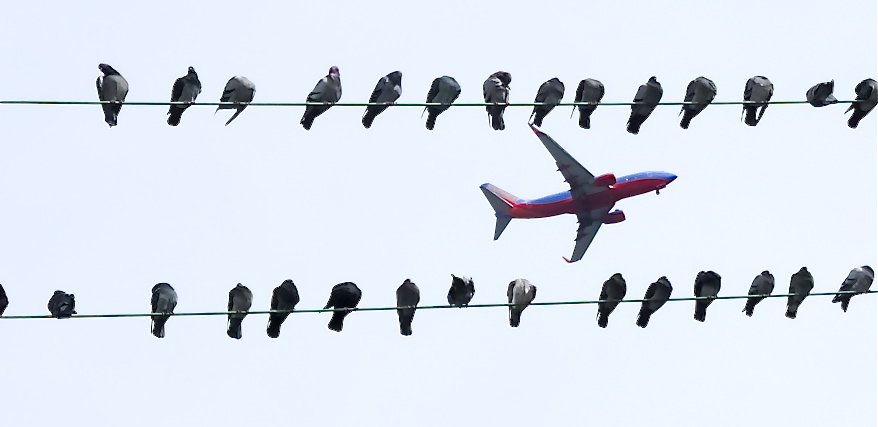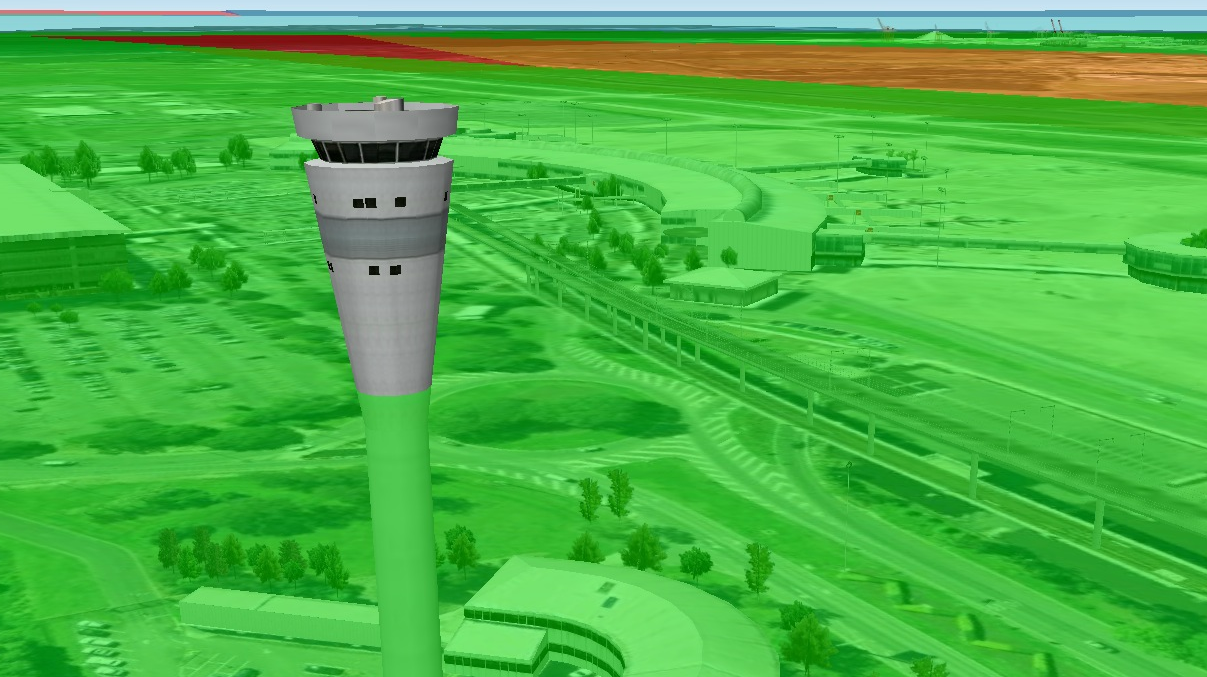
The old Runway Centreline posts kept here for prosterity
Complete Wildlife Risk Management Series
Late last year, I posted that I was writing on another blog a complete series on an ISO31000 view of airport wildlife risk management. Well, that 7-part series is now complete and to view the whole series head over to my author page on New Airport Insider or you can read each post by clicking the individual links below.
Late last year, I posted that I was writing on another blog a complete series on an ISO31000 view of airport wildlife risk management. Well, that 7-part series is now complete and to view the whole series head over to my author page on New Airport Insider or you can read each post by clicking the individual links below.
Post 1: Airport Wildlife Risk Management: Framework and Consultation
Post 4: Airport Wildlife Risk Modelling
Post 5: How to Set the Standards for Airport Wildlife Management Decisions
While you are over there, why not leave a comment on your experiences, opinions and ideas?
image: (cc) Dorte
Guest Posting - Airport Wildlife Risk Management
A couple of month's ago, I was kindly asked to write some articles for a new online magazine. The topic of choice was wildlife risk management. As it turns out, my first article was the launch article and it went live today!
A couple of month's ago, I was kindly asked to write some articles for a new online magazine. The topic of choice was wildlife risk management. As it turns out, my first article was the launch article and it went live today!
You can check it out here and keep an eye out for the six follow up articles at the New Airport Insider.
* image (cc) www.ingridtaylar.com.
Comment on Firearm Safety Recommended Practice
The good folk over at the Australian Aviation Wildlife Hazard Group (AAWHG) have released their first Recommended Practice. It's still in draft form and comments are welcome. First off the block is a draft RP 3.2.1 - Firearm Safety. The document outlines a range of "shoulds" and is a great start, if not an end, for airport operators to get their own processes and procedures up to an industry standard - perhaps even, best practice.
The good folk over at the Australian Aviation Wildlife Hazard Group (AAWHG) have released their first Recommended Practice. It's still in draft form and comments are welcome. First off the block is a draft RP 3.2.1 - Firearm Safety. The document outlines a range of "shoulds" and is a great start, if not an end, for airport operators to get their own processes and procedures up to an industry standard - perhaps even, best practice.
I applaud the AAWHG for going down this route. Industry standards are a great way for us to lift our own performance in a cooperative, intelligent and context-driven way. I can't wait to see more RPs from the AAWHG and perhaps some more from other industry groups.
If you want to comment on RP 3.2.1, you have until the 16th September to send them through to rp@aawhg.org.
HazMat AC Comments Close Soon
Here's a friendly reminder that comments on the recently resealed draft advisory circular regarding hazardous materials handling must be in by 3 October 2011. Submissions to Matt Windebank by then will be duly regarded - after that date, not so much.
Draft AC 139 - HazMat Handling - Open for Comment
Here is another chance to have your say - this time it's a revision of the old CAAP 89I-1(2) to match the more modern CASR Part 139 and associated advisory circular format. Draft AC 139-12(0) - Handling of Hazardous Materials on an Aerodrome "provides guidance to Aerodrome Operators on aerodrome administration andoperating procedures for the handling of hazardous materials on the aerodrome" as required by CASR 139.095.
Send your comments to Matt Windebank by 3 October 2011.
Confidential Reporting - Have your say
The ATSB has posted, today, a discussion paper and set of draft regulations covering its confidential reporting system. You can have your say on the proposals with submissions accepted until the 16th December 2011. Comments, questions etc. can be sent to repconreform@atsb.gov.au. The discussion paper covers the 'no-blame' and 'just culture' approaches to reporting systems - no, they are not the same. These are concepts I'm very keen to research more, so stayed tuned - don't hold your breath though, its pretty hectic over here right now but I will try to post a few more things this week.
:)
Obstacle Limitation Surface 3D Visualisation
Here is the product of a couple more nights drawing on my mac. They are the MOS 139 compliant (or there abouts) obstacle limitation surfaces for the main runway at Brisbane Airport.
You can use Google Earth to really explore the OLS in all its (fairly accurate) 3D glory. Check out pictures below for established infringements. The gateway bridges also make for a good indication of the location of the OLS around the airport. Brisbane residents could even calculate the maximum height of their renovations.
And a long time before this, I also drew an exaggerated vertical scale version of a code 3 non-instrument OLS over a remote aerodrome in Western Australia.
Dilbert on Risk Management
 The ingenious Scott Adams definitely has a knack for breaking down business/social situations and highlighting the absurdity of all-too-common actions. I've seen this one quite a few times during safety audits and often, people show as little shame as you'd expect to see from the "pointy-haired boss".
The ingenious Scott Adams definitely has a knack for breaking down business/social situations and highlighting the absurdity of all-too-common actions. I've seen this one quite a few times during safety audits and often, people show as little shame as you'd expect to see from the "pointy-haired boss".
I think this comes from a fundamental mis-understanding of the reason for risk management. It is not a task you complete to tick a compliance box - it is what you do to satisfy yourself that your plan is sound.
Enough preaching - check out this page for more of Dilbert on risk management.
New Advisory Circular - Aerodrome Staff Training
A reformatted and revised CAAP 89C-1 has been released under the current regulatory regime as AC 139-13(0) - Training of Aerodrome Reporting Officers & Works Safety Officers. Overall, the new AC outlines CASA expectations with respect to aerodrome staff training with nationally-recognised training featuring heavily. While Registered Training Organisations were included in previous advisory material, this material was published prior to the development of the Aviation Training Package (AVI08). This package supersedes the Australian Airport's Association's competency standards - although these are still available on the CASA website.
What's New
There are some new recommendations to be found inside the AC. Training should take at least five days and students with no prior experience should undertake an extra two days of practical field experience. Plus refresher training should be conducted at least every five years although two is recommended.
More to Come
There are quite a few active aerodrome regulatory projects in progress - stay tuned for more releases.
New Advisory Circular - Wildlife Hazard Management
After a great deal of hard work by a dedicated aerodrome inspector (not me) - CASA has just released an advisory circular on Wildlife Hazard Management at Aerodromes.
Reminder - Draft AC Comments Closing Soon
Remember your comments on the Draft AC 139-13(0) Training of Aerodrome Reporting Officers and Works Safety Officers closes on 3 June 2011. Send them into Matt Windebank by Friday.
Draft AC Open for Comment
Draft AC 139-13(0) Training of Aerodrome Reporting Officers and Works Safety Officers was released for comment today. Submissions to Matt Windebank by the 3rd June 2011.








